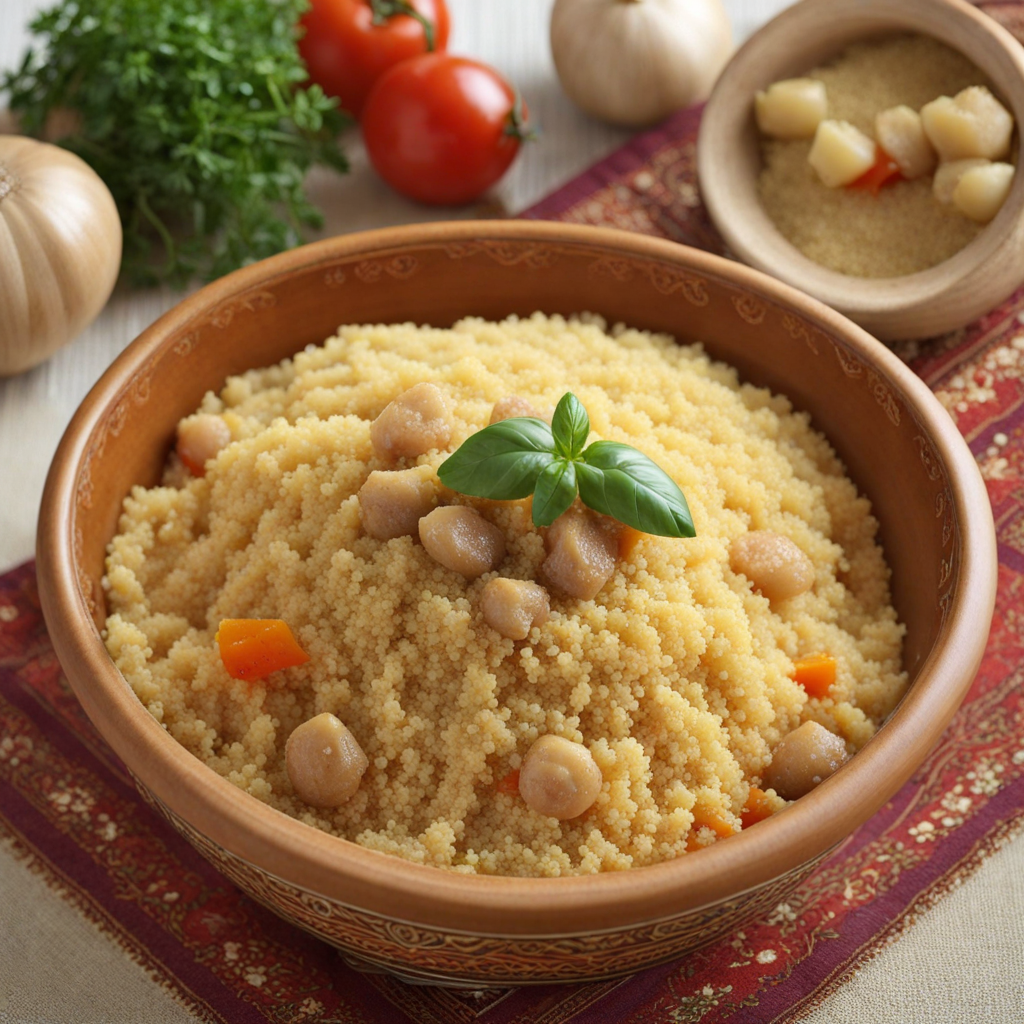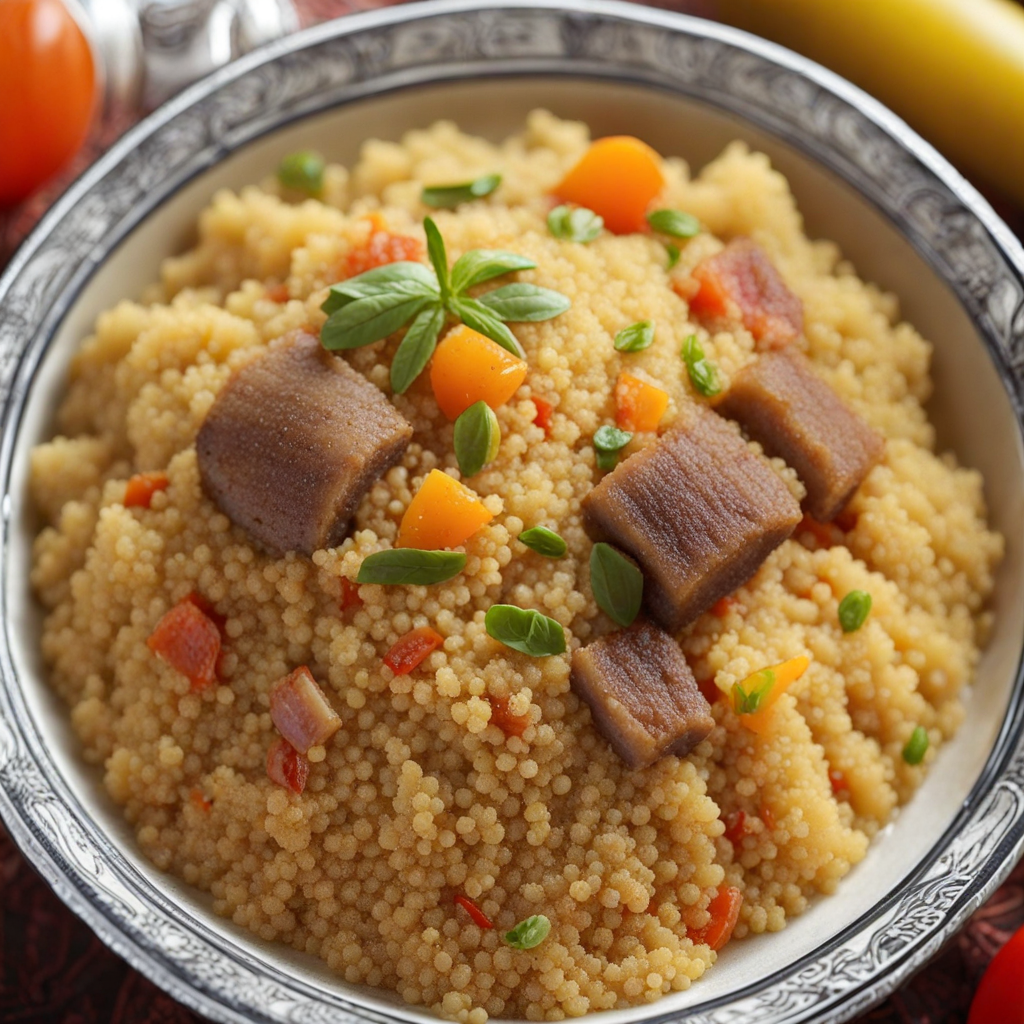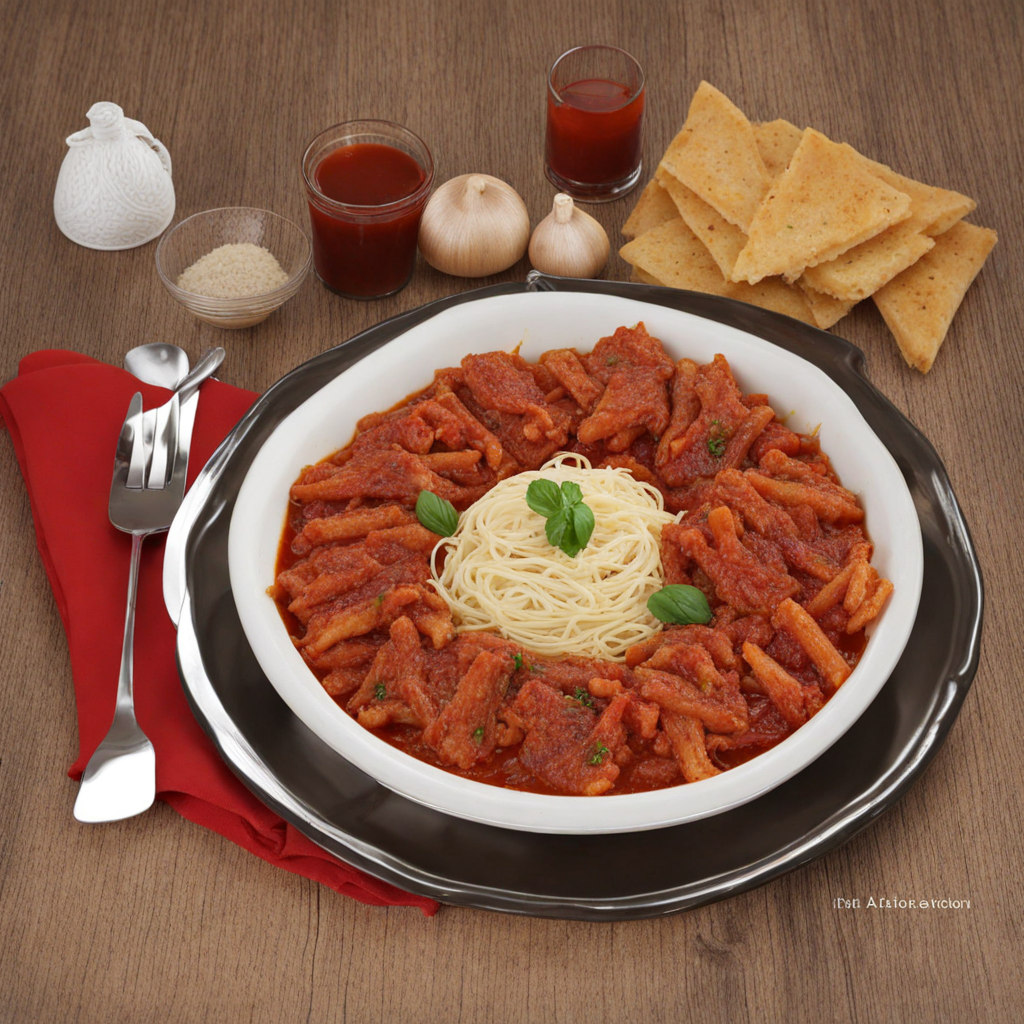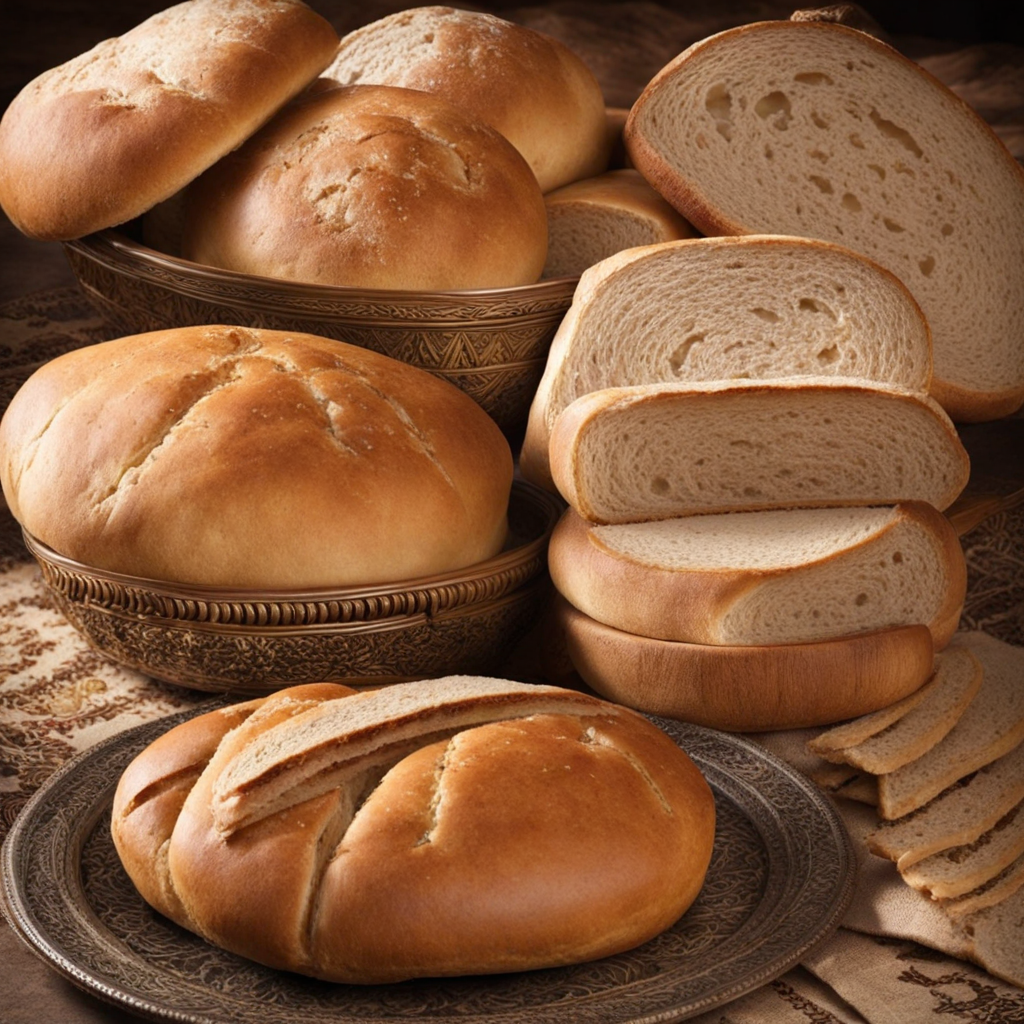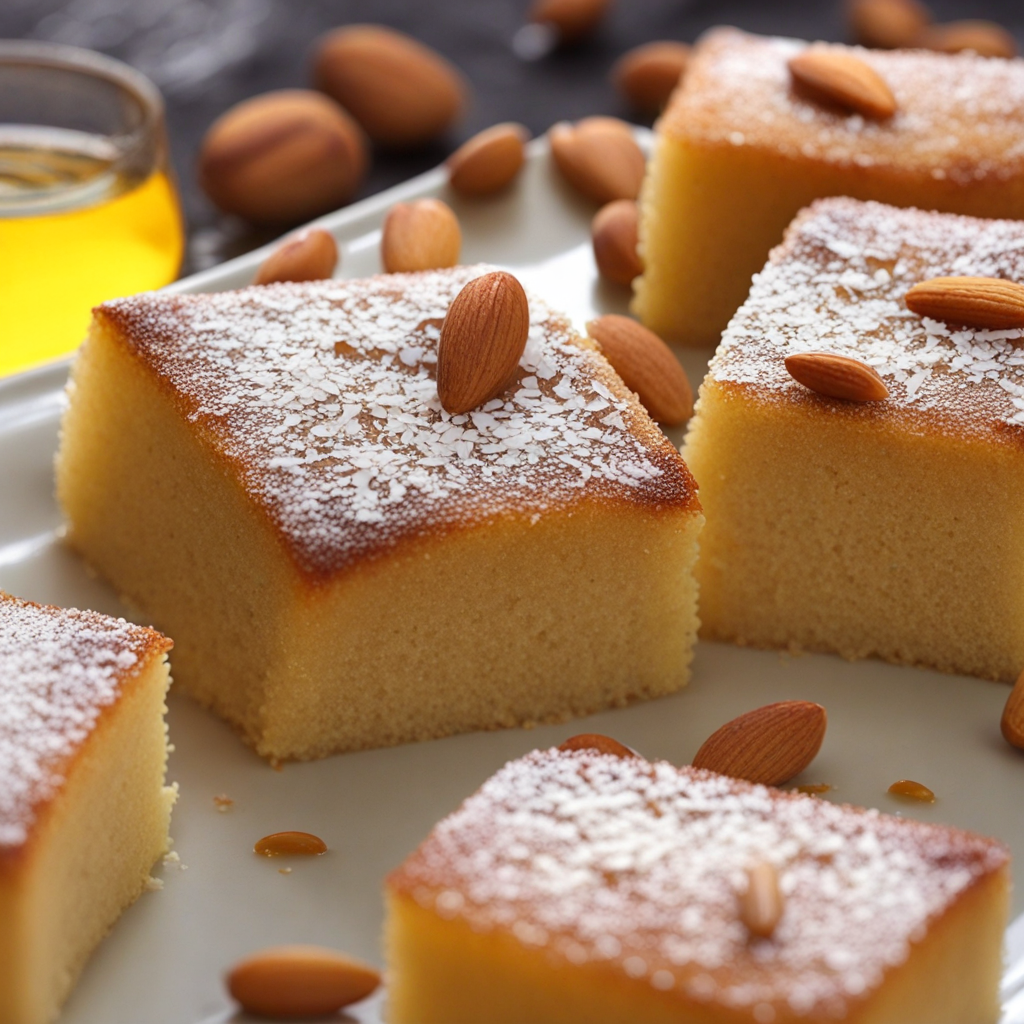Couscous
Couscous is a traditional North African dish that has gained international popularity, particularly in Algeria, where it is often regarded as a national treasure. Made from steamed semolina wheat granules, couscous has a light, fluffy texture that serves as an excellent base for a variety of toppings and flavors. The preparation involves a unique steaming process, which allows the couscous to absorb the flavors of the accompanying ingredients, resulting in a dish that is both versatile and satisfying. The granules are typically served with a rich stew, often made with lamb, chicken, or vegetables, infused with a blend of aromatic spices such as cumin, coriander, and saffron, creating a delightful fusion of flavors that dance on the palate. In Algerian cuisine, couscous is often prepared for special occasions and festive gatherings, symbolizing community and togetherness. It is traditionally served in a large communal dish, encouraging family and friends to share in the experience. The dish can be customized with various toppings, ranging from tender vegetables like carrots, zucchini, and chickpeas to rich, slow-cooked meats. Each region in Algeria may have its own unique twist on the dish, incorporating local ingredients and flavors, making it a delightful culinary journey for those eager to explore. The beauty of couscous lies not only in its taste but also in its cultural significance. It is a dish that reflects the rich heritage of Algerian cuisine, showcasing the use of seasonal ingredients and traditional cooking methods. Accompanied by a side of harissa, a fiery chili paste, or a drizzle of olive oil, couscous becomes a canvas for creativity, inviting food lovers to experiment with different combinations. Whether enjoyed as a hearty meal or a flavorful side dish, couscous offers a unique taste of Algeria that is sure to leave a lasting impression and inspire culinary exploration.
How It Became This Dish
The History of Couscous: A Culinary Gem of Algeria Couscous, known as "كسكس" in Arabic, is more than just a dish; it is a symbol of cultural identity, familial ties, and the rich history of Algeria and the broader Maghreb region. This seemingly simple dish, composed of steamed semolina wheat granules, has a complex background that weaves through the fabric of North African life, reflecting the influences of geography, trade, and cultural exchange. Origins The precise origins of couscous are somewhat murky, but it is widely believed to have emerged in the 9th century during the Islamic Golden Age. The Berbers, indigenous people of North Africa, are credited with its creation. The earliest known written reference to couscous appears in a 13th-century cookbook by Ibn al-Awwam, a prominent Andalusian agronomist. However, oral traditions suggest that couscous may have been consumed long before this, possibly as early as the 3rd century. The base ingredient of couscous, durum wheat, is well-suited to the arid climate of Algeria and the surrounding regions. Its cultivation became integral to the local agricultural practices, allowing communities to thrive despite the challenging environment. The grain itself symbolizes resilience and sustenance in a land where food scarcity can be an issue. Cultural Significance Couscous holds profound cultural significance in Algeria and is often regarded as the national dish. It transcends mere sustenance; it embodies community, tradition, and celebration. In Algeria, couscous is typically served during family gatherings, religious celebrations, and significant life events such as weddings and births. Each occasion brings its unique variation, showcasing the adaptability of this dish. Traditionally, couscous is prepared in a special pot called a "couscoussier," which consists of two parts: a lower pot for stewing meat and vegetables and an upper steamer for cooking the couscous itself. The steaming process allows the grains to absorb the flavors of the accompanying broth, creating a dish that is both hearty and aromatic. The communal aspect of couscous preparation is equally important. Families often gather to prepare the dish, with members participating in different stages of the cooking process. This ritual fosters a sense of belonging and reinforces familial bonds. In many households, the act of sharing a plate of couscous is a gesture of hospitality, symbolizing the values of generosity and warmth that are central to Algerian culture. Development Over Time Over the centuries, couscous evolved, absorbing influences from various cultures and cuisines. The arrival of the Arabs in the 7th century introduced new spices and cooking techniques that enriched the flavor profile of couscous. The Ottomans, who ruled parts of North Africa from the 16th to the 19th centuries, further influenced Algerian cuisine, incorporating ingredients such as raisins, almonds, and saffron. During the French colonial period (1830-1962), couscous faced challenges as Western culinary practices permeated Algerian society. Yet, despite this intrusion, couscous remained a staple, serving as a symbol of resistance and identity for many Algerians. It became a medium through which people could express their cultural heritage, often prepared in traditional ways despite the pressures of modernization. In the post-colonial era, couscous regained its status as a culinary emblem of national pride. It became a symbol of Algeria's sovereignty and cultural revival. The dish is now celebrated not only within Algeria but also internationally, as Algerian diaspora communities share their culinary heritage abroad. Modern Interpretations In contemporary times, couscous has continued to evolve, adapting to modern tastes while retaining its traditional roots. Chefs and home cooks alike experiment with various ingredients, creating innovative versions of the dish. While the classic couscous is often served with lamb or chicken and a medley of vegetables, modern variations may include seafood, vegetarian options, and international flavors. The global recognition of couscous has also led to its incorporation into diverse culinary contexts. It has found its way into gourmet restaurants and food festivals, showcasing its versatility beyond the confines of traditional Algerian cuisine. This has resulted in a fusion of flavors and techniques, leading to creative dishes that still honor the essence of couscous. Couscous in the Global Context Couscous is not unique to Algeria; it is a staple throughout North Africa, each country boasting its variations and preparations. In Morocco, for instance, sweet versions incorporating cinnamon and raisins are popular, often served during festive occasions. Tunisia features spicy variations with harissa, a hot chili paste, reflecting its bold culinary style. In recent years, couscous has gained popularity in the Western world as a health-conscious alternative to rice and pasta. Its nutritional profile—rich in carbohydrates, fiber, and protein—has made it a desirable option for those seeking healthier meal choices. This has led to a greater appreciation of North African cuisine, contributing to a broader understanding of the cultural significance of dishes like couscous. Conclusion Couscous is more than a dish; it is a narrative woven through the history and culture of Algeria and the Maghreb. From its ancient origins to its modern interpretations, this beloved food reflects the resilience and adaptability of the people who create it. It serves as a reminder of the importance of community, tradition, and cultural identity in an ever-changing world. As couscous continues to evolve and gain recognition globally, it retains its place as a cherished symbol of Algerian heritage. Whether enjoyed at a family gathering, a festive celebration, or a modern culinary event, couscous remains a testament to the enduring power of food to unite people and tell stories across generations.
You may like
Discover local flavors from Algeria


